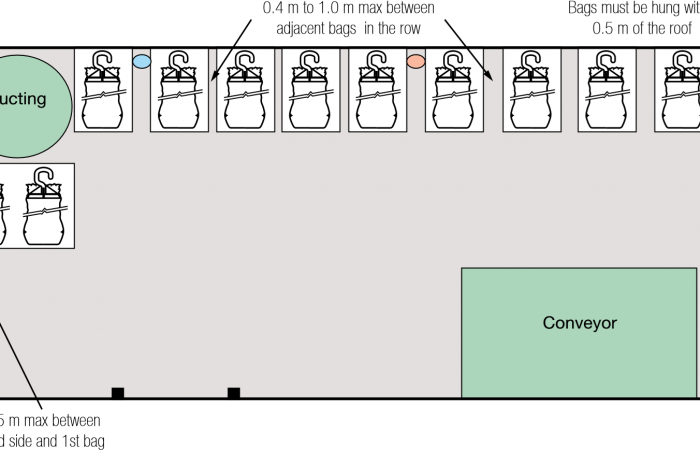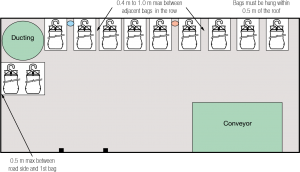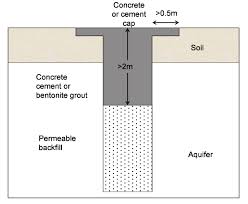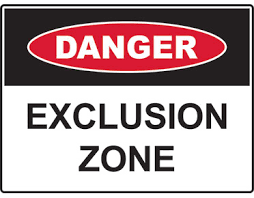
May 30 2018 MRE North Goonyella. “The ‘Bat Bags” observed at the entry to the LW TG were 50% damaged.” The Mine was reminded that the use of “Bat Bags” does not remove the requirements for incombustible matter as required by the CMSHR s301″ Why no Section 167 Directive to Suspend Operations due to Unacceptable Risk??
bagged-stonedust-barriers study UK
There were stonedust “Bat Bags” installed on the roof at the commencement of the LW MG travel road. The stonedust standards on the roof and ribs in the MG travel road were not up the standard seen in the main headings and yet are supposed to be 85% incombustible compared to 70% in the mains. The Mine was reminded that the use of “Bat Bags” does not remove the requirements for incombustible matter as required by the CMSHR s301. The ‘Bat Bags” observed at the entry to the LW TG were 50% damaged. The Mine must decide if it intends to continue to use them and if so, to ensure that they are effectively maintained.
DOES THE MINES INSPECTOR NOT HAVE A RESPONSIBILTY TO DECIDE WHETHER THERE IS AN UNACCEPTABLE LEVEL OF RISK?
Of Course he does.
As does the Mine Management in particular the Mine Manager and Ventilation Officer.
These are some of the minimum requirements from a study done in the UK
For a Roadway size of 5m wide x 3.2m high, the number of 6 kg required is 384 bags.
There should have been a Section 167 Directive Issued requiring the Bat Bag Barrier to be brought back to 100% standard.
What if any action has the Inspectorate taken at other Underground Mines that employ “Batbags”


- If an inspector, inspection officer or industry safety and health representative believes risk from coal mining operations is not at an acceptable level, the inspector, officer or representative may give a directive to any person to suspend operations in all or part of the mine.
Excerpts from UK Study
Longwall Workings, Headings in Coal and Bord and Pillar Workings
26 The conveyor roadway of any such working should be protected by either:
- primary and secondary barriers installed at the distances specified, (Fig. 4, 4a & 4b) or
- a distributed barrier installed at the distances specified (Fig. 5, 5a, & 5b)
- The horizontal distance between hooks of bags in the same row must not be less than 0.4 metres and not greater than 1.0 metre.
- The distance between the outer bags and the sides of the roadways must not exceed 0.5 metres.
- For roadways up to 3.5 metres high one layer of bags per row is required, they should be suspended with the hooks between 0 metres and 0.5 metres from the roof. The bags should be installed to follow the roadway profile.
- For roadways between 3.5 metres high and 4.5 metres high, two layers of bags per row are required. The bags should be evenly distributed between the layers with the hooks suspended between 0 metres and 0.5 metres from the roof in layer one and between 0.5 metres and 1.0 metres from the roof in layer two (Diagram 2).
- For roadways greater than 4.5 metres high three layers of bags per row are required. The bags should be evenly distributed between the layers with the hooks suspended between 0 metres and 0.5 metres from the roof in layer one, between 0.5 metres and 1.0 metre from the roof in layer two and between 1 metre and 1.5 metres from the roof in layer three.
- The distance between each row of bags within a sub barrier or within a distributed barrier should not be less than 1.5 metres and not be greater than 3 metres.
Where any type of bagged barrier is used to provide explosion protection in a conveyor roadway additional bags (to those required for the standard barrier) should be suspended beneath the conveyor structure to provide additional protection against passage of a flame under the belt. In circumstances where a conveyor is wider than 2m and there is more than 1m between the conveyor and the floor of the roadway, then one additional bag per metre width of the conveyor should be installed beneath the conveyor for each row of bags suspended in that roadway.
The stonedust requirement for the complete primary barrier should be calculated to achieve a stone dust density of 1.2 kg/m³
Worked Example
Roadway size: 5m wide x 3.2m high.
Volume of roadway = 5m x 3.2m x 120m = 1920m³
Therefore stonedust required in barrier is 1920m³ x 1.2 kg/m³ = 2304kg of stonedust in the barrier.
Number of 6 kg bags to barrier: 2304/6 = 384 bags.
Number of bags per sub barrier: 384/4 = 96 bags.
If bags are hung 0.5m from the sides of the roadway and 0.4m apart then each row will contain 11 bags.
This example shows each sub barrier should contain a minimum of 96 bags, if each sub barrier consists of 9 rows of 11 bags a total of 99 bags would be used therefore satisfying the minimum requirement.
If each row is spaced 1.5m apart then each sub barrier will extend over a distance of 12m (Fig.1).
Secondary Barrier
- The secondary barrier should consist of two identical sub barriers and be installed over a distance of 120m of continuous roadway.
- The first row of bags in the secondary barrier should not be closer than 70m and not be further than 120m from the last row of bags in the primary barrier.
- To ensure the minimum stonedust requirement is in place during retreating/ advancing of the barrier an additional (third) sub barrier should be used; this should be installed before the first sub barrier is out of distance with the working place it is protecting.


